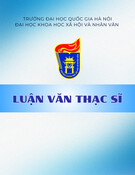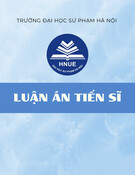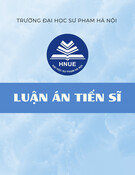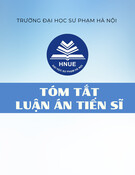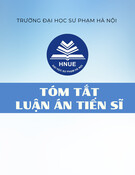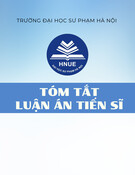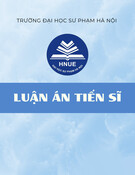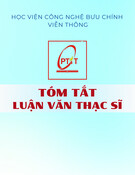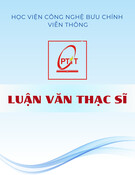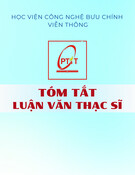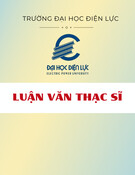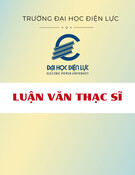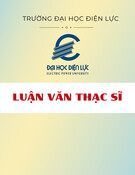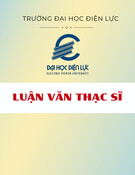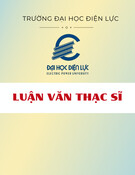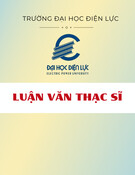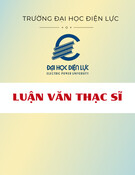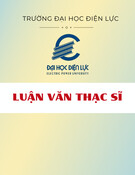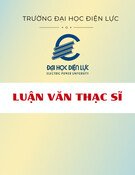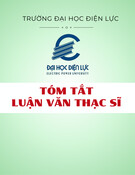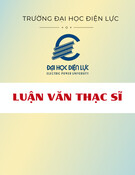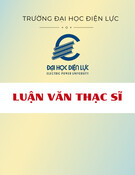
Leadership Literacies for Professional Staff in Universities
A thesis submitted in fulfilment of the requirements
for the degree of Doctor of Philosophy
Heather L. Davis
BBus (RMIT), MPET (Deakin)
School of Management
RMIT University
June 2012

ii
Acknowledgements
I gratefully acknowledge my supervisor Sandra Jones for her encouragement,
single-mindedness and considerable understanding of what it takes to stay on
course as I traversed a lot of territory; and for knowing when to let me explore and
when to rein me in. As a practice-led researcher I came with ideas and a passion
for this topic which, under Sandra’s counsel, were galvanised into a plan of inquiry.
I sincerely thank her for her encouragement, good humour, intellect and staying
power. Special mention and thanks, Sandra, for your ability to finally move my
resistant focus stemming from these ideas and passion for my profession to what
is expected to be in (and out) of a thesis in the discipline of management.
Peter Macauley, my second supervisor, is acknowledged for his encouragement
and the collegial working relationship we have shared for thirty years. Having
someone who knew me well was invaluable for my own personal journey
especially since my identity shifted, being unmade and remade in the process of
this experience. Thanks Pete for your practical and strategic advice, gleaned from
your own doctoral education research focus, it was invaluable.
I also acknowledge the support and assistance of RMIT for their research training
program, their RMIT/APA full-time Scholarship, as well as the opportunities
afforded by presenting at international conferences in Rome and London. Special
thanks to Inger Mewburn at the Graduate School of Research for leading an
inspired program of research training.
I have many people to thank for their support during this time. Of special mention
are my fellow research students Deborah Nanschild, Anne Hiha, David Holzmer,
Ailsa Haxell, Carroll Graham and Robyn Ward for the many conversations shared
which led me to deeper understandings of my inquiry (and theirs). Thanks to Chris
Bigum for the generous chats about all things philosophical. Special thanks to
Terry Evans for his initial encouragement to begin the journey and for wisdom
shared during many discussions since.
Particular acknowledgement and thanks to the 226 Association for Tertiary
Education Management (ATEM) colleagues who took the time to participate in this
research project. This would not have been possible without the support of Maree
Conway and Giles Pickford (ATEM Secretariat) who agreed to act as the conduit
between myself, as researcher, and the potential participants for this study. Thank
you, Linda McKellar, ATEM Vice President, for your wisdom and as conference
travelling companion for several overseas trips; Stephen Weller, President of
ATEM, for your commendations of support and encouragement. Thanks also to my
reference group of experts who tested the survey instrument for relevance and
ease of use.
Last but no means least are my family. I would not have been able to take time out
to undertake this inquiry as a full-time student without the support of my partner,
Philip. His encouragement, support and culinary skills sustained me during this
time. I dedicate this thesis to my children Ashleah and Rohan who have been as
supportive of my studies as I have been of theirs. They have been the inspiration to
look afresh at leadership and hopefully they (and their generation) will benefit from,
and indeed champion, the kinds of 21st leadership literacies I have made visible in
this thesis.

iii
Table of Contents
Declaration by Candidate ........................................................................................................................ i
Acknowledgements ................................................................................................................................. ii
Table of Contents ................................................................................................................................... iii
Figures and Tables ................................................................................................................................. vi
ABSTRACT ........................................................................................................................ VII
CHAPTER ONE | INTRODUCTION ............................................................................................................ 1
1.1. INTRODUCTION ............................................................................................................................... 1
1.1.1 DEFINING CONCEPTS .................................................................................................... 4
1.2. RESEARCH RATIONALE .................................................................................................................... 5
1.2.1 COGNITIVE FRAMES UNDERPINNING THIS INQUIRY ............................................................... 7
1.2.2 RESEARCH QUESTIONS ................................................................................................ 10
What are Leadership Literacies for Professional Staff in Universities? ................................................ 11
To what extent are these being theorised within Australian universities? ........................................... 12
To what extent are these being experienced by professional staff working in Australian universities?
.............................................................................................................................................................. 12
1.3. HOW THE INQUIRY WAS ENACTED ................................................................................................ 13
1.4. HOW THE THESIS IS STRUCTURED ................................................................................................. 14
1.4.1 CHAPTER OUTLINES .................................................................................................... 15
CHAPTER TWO | RESEARCH METHODOLOGY AND DESIGN .................................................................. 16
2.1 INTRODUCTION .............................................................................................................................. 16
2.2 COGNITIVE FRAMES FOR THE INQUIRY .......................................................................................... 18
2.2.1 AMERICAN PRAGMATISM ............................................................................................ 18
2.2.2 CRITICAL MANAGEMENT STUDIES (CMS) ........................................................................ 19
Pragmatist Feminist Guiding Principles ................................................................................................ 21
2.3 MEANS TO ENACT THE INQUIRY ..................................................................................................... 26
2.3.1 INTERPRETIVE ACT OF INQUIRY ...................................................................................... 26
2.4 MEANS TO INVESTIGATE THE INQUIRY........................................................................................... 31
2.4.1 EXTANT DATA ........................................................................................................... 33
2.4.2 QUALITATIVE SURVEY ................................................................................................. 35
2.4.3 DATA ANALYSIS ......................................................................................................... 39
2.5 CONCLUSION .................................................................................................................................. 41
CHAPTER THREE | CONTEXTS FOR 21ST CENTURY LEADERSHIP............................................................. 43
3.1 INTRODUCTION .............................................................................................................................. 43
3.2. MAKING SENSE OF COMPLEXITY ................................................................................................... 46
Learning Metabolism ............................................................................................................................ 51
3.2.1 MINDSETS ................................................................................................................ 52
The 21st Century and its precursors ....................................................................................................... 53
Sustainability as Possible Zeitgeist ...................................................................................................... 60
3.2.2 LANGUAGE AND POWER RELATIONS ............................................................................... 65
3.3 KEY PREMISES FOR LEADERSHIP STUDIES ....................................................................................... 69
CHAPTER FOUR | 21ST CENTURY LEADERSHIP LITERACIES ................................................................... 71

iv
4.1 INTRODUCTION .............................................................................................................................. 71
4.2 LEADERSHIP LITERACIES ................................................................................................................. 75
4.3 SCOPING 21ST CENTURY LEADERSHIP CONCERNS ........................................................................... 76
4.3.1 HUMAN RELATIONS MOVEMENT ................................................................................... 80
Energy Management ............................................................................................................................ 84
4.3.2 A SPACE FOR LEADERSHIP ENACTMENTS .......................................................................... 86
The Work of Leading ............................................................................................................................. 88
Leadership as Processes of Relational and Social Factors ..................................................................... 88
The Invisible Leader: The Trinity of Leadership, Followership and Purpose .......................................... 91
4.3.3 LEARNING TO LEAD IN VUCA CONDITIONS ....................................................................... 92
4.4 NAMING LEADERSHIP LITERACIES FOR PROFESSIONAL STAFF IN UNIVERSITIES ............................. 98
4.4.1 WHAT ARE THEY? ...................................................................................................... 98
4.5 CONCLUSION ................................................................................................................................ 102
CHAPTER FIVE | TESTING TIMES FOR AUSTRALIAN HIGHER EDUCATION LEADERSHIP ....................... 103
5.1 THE AUSTRALIAN HIGHER EDUCATION SECTOR AS CONTEXT ....................................................... 103
5.2 UNIVERSITY LEADERSHIP IN AUSTRALIA ....................................................................................... 107
5.2.1 TO WHAT EXTENT ARE THE LEADERSHIP LITERACIES BEING THEORISED IN AUSTRALIAN
UNIVERSITIES? ................................................................................................................................... 108
REPORT 1: THE LEARNING LEADERS IN TIMES OF CHANGE REPORT ............................................... 111
Worldly Leadership Literacy ................................................................................................................ 112
Sustaining Leadership Literacy ............................................................................................................ 113
Leadingful and Relational Leadership Literacies ................................................................................. 114
Learningful Leadership Literacy .......................................................................................................... 114
REPORT 2: LESSONS LEARNT: IDENTIFYING SYNERGIES IN DISTRIBUTED LEADERSHIP PROJECTS REPORT . 115
Worldly Leadership Literacy ................................................................................................................ 116
Sustaining Leadership Literacy ............................................................................................................ 116
Leadingful Leadership Literacy ........................................................................................................... 117
Relational Leadership Literacy ............................................................................................................ 118
Learningful Leadership Literacy .......................................................................................................... 118
5.3. PROFESSIONAL STAFF IN AUSTRALIAN UNIVERSITIES .................................................................. 119
5.4 CONCLUSION ................................................................................................................................ 122
CHAPTER SIX | LEADERSHIP FOR PROFESSIONAL STAFF IN AUSTRALIAN UNIVERSITIES ..................... 124
6.1 INTRODUCTION ............................................................................................................................ 124
6.2 FRAMING QUESTIONS TO REPRESENT EMERGENT LEADERSHIP LITERACIES THEMES ................... 125
6.2.1 HOW THE DATA ANALYSIS WAS ENACTED ....................................................................... 127
A Qualitative Survey approach ........................................................................................................... 127
6.2.2 THE PARTICIPANTS ................................................................................................... 129
6.3 THEMATIC ANALYSIS OF 21ST CENTURY LEADERSHIP LITERACIES .................................................. 132
6.3.1 THE WORLDLY LEADERSHIP LITERACY ........................................................................... 133
Servant Leadership Theory as an Indicator of Worldly Leadership ..................................................... 133
6.3.2 THE SUSTAINING LEADERSHIP LITERACY ......................................................................... 136
Ecological Sustainability...................................................................................................................... 137
Human Sustainability .......................................................................................................................... 139

v
6.3.3 THE LEADINGFUL LEADERSHIP LITERACY......................................................................... 147
6.3.4 THE RELATIONAL LEADERSHIP LITERACY ......................................................................... 151
6.3.5 THE LEARNINGFUL LEADERSHIP LITERACY ....................................................................... 156
6.4 CONCLUSION ................................................................................................................................ 159
CHAPTER 7 | DISCUSSION AND CONCLUSION .................................................................................... 161
7.1 FINDINGS DISCUSSION ................................................................................................................. 161
7.1.1 NEW KNOWLEDGE CLAIMS ......................................................................................... 165
7.2 MAKING SENSE OF THE INQUIRY .................................................................................................. 167
7.2.1 READY… ................................................................................................................ 168
7.2.2 FIRE… ................................................................................................................... 169
7.2.3 THEN AIM… ........................................................................................................... 169
7.3 FINAL REFLECTIONS ...................................................................................................................... 171
REFERENCES ................................................................................................................................ 173
APPENDICES ....................................................................................................................................... 201
APPENDIX 1: SURVEY INSTRUMENT AND ANALYSIS DOCUMENTS ................................................. 201
Appendix 1A: Survey Instrument (including extra details for questions 19 & 20) ............................... 201
Appendix 1B: Placing the questions into themes for thematic analysis .............................................. 201
APPENDIX 2: INVITATION TO PARTICIPANTS ............................................................................ 201
Appendix 2A: Endorsement from ATEM President .............................................................................. 201
Appendix 2B: Invitation to participants, including a plain language statement ................................. 201

